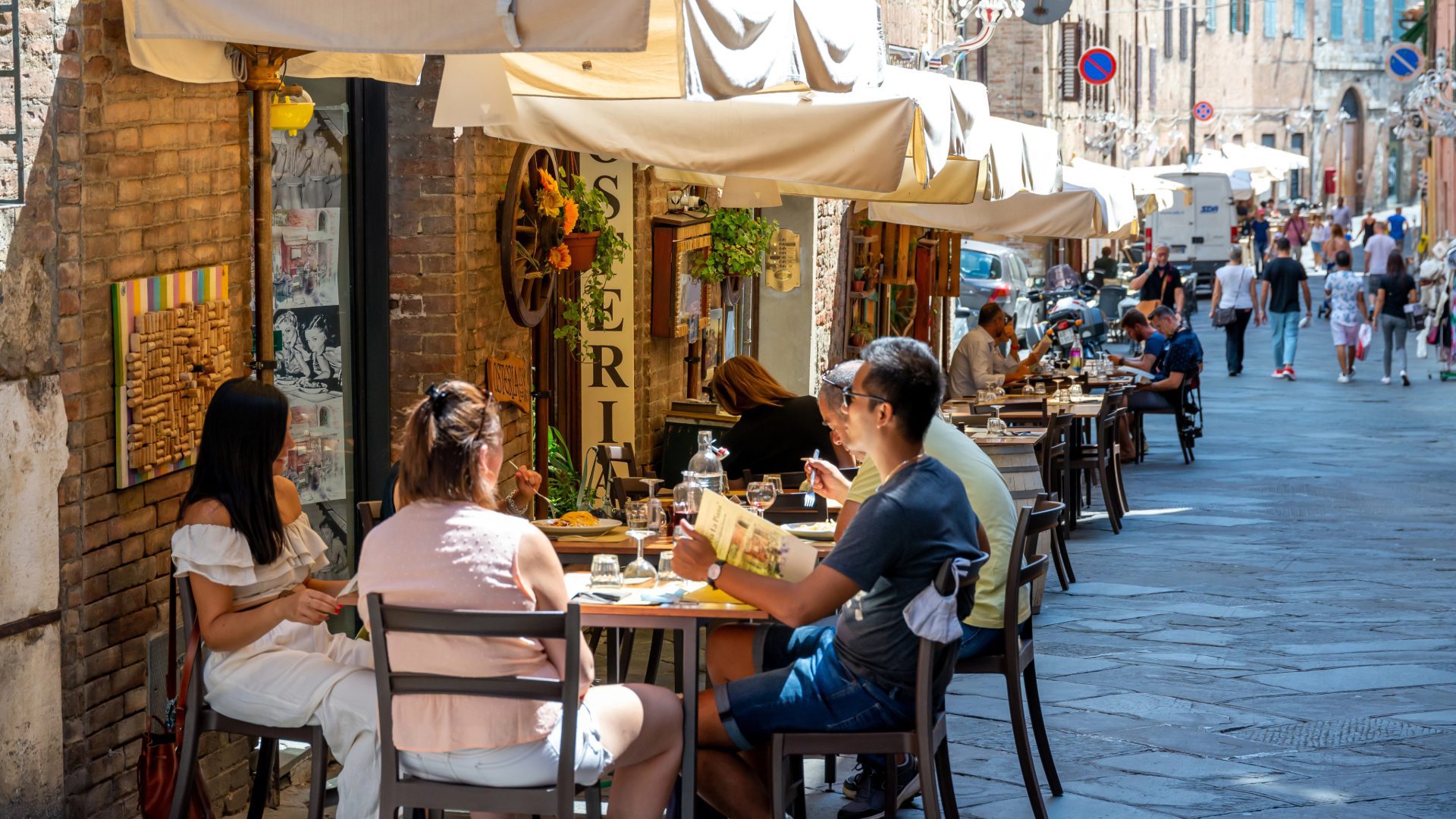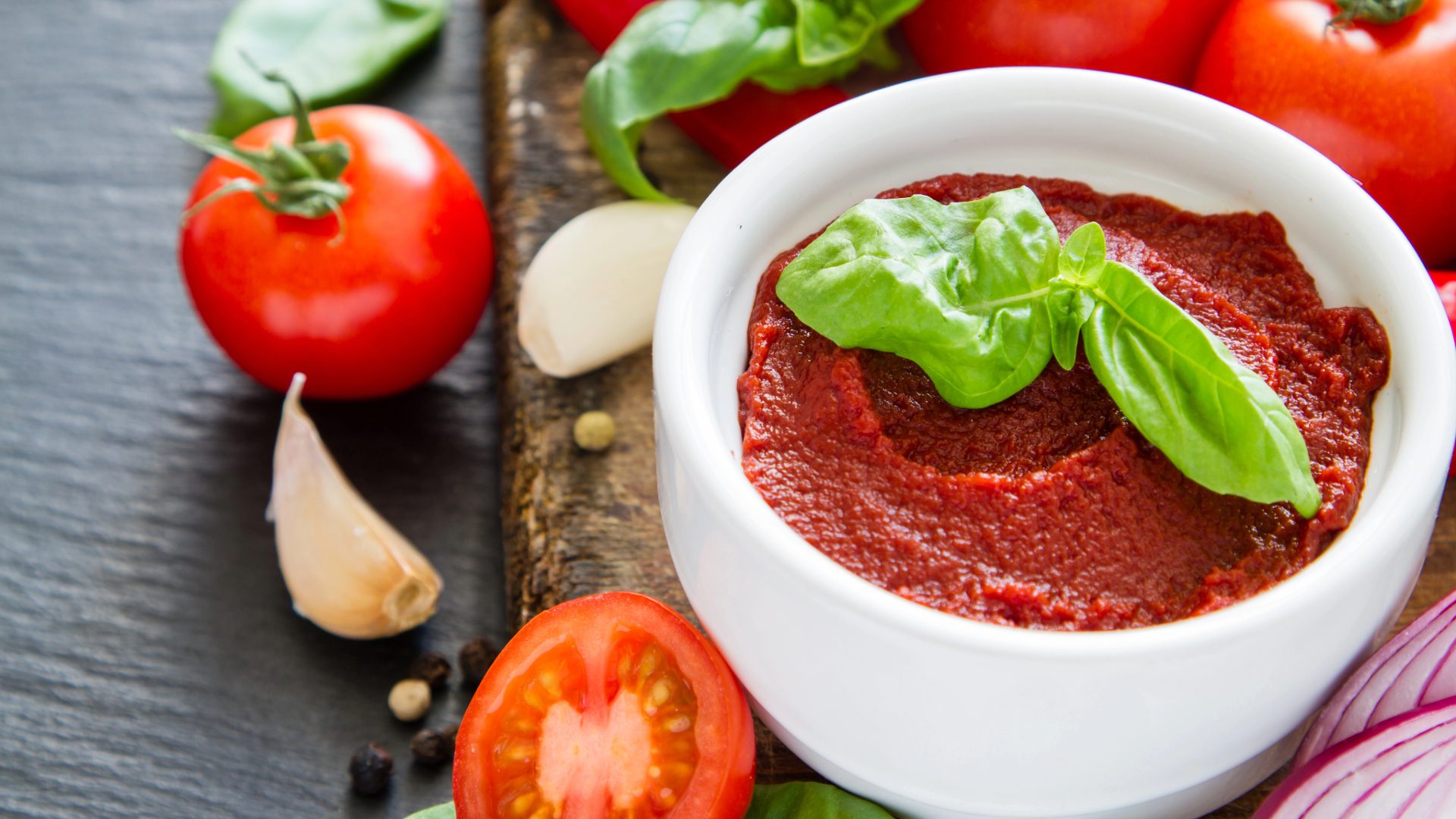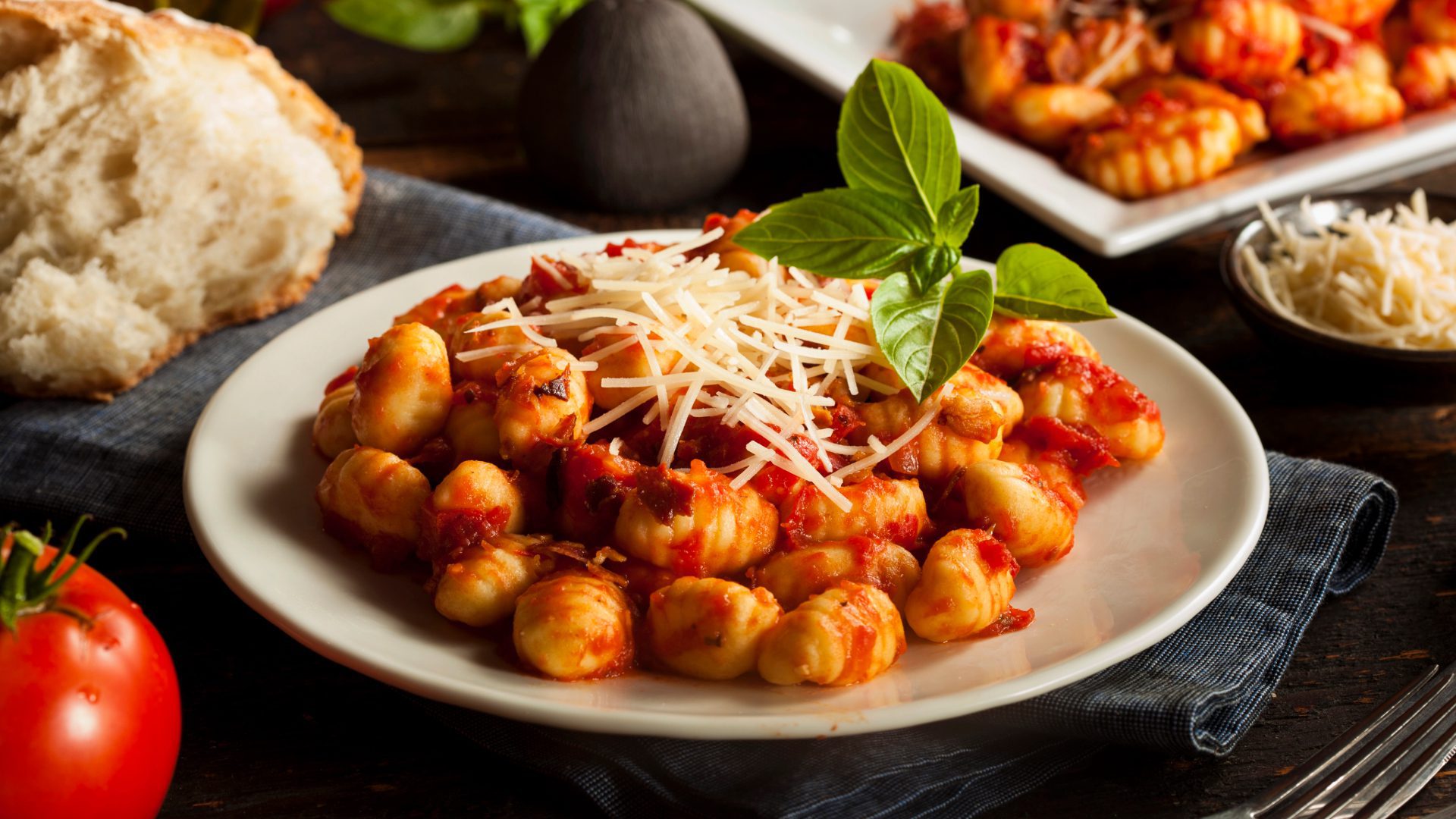Ever wonder why Italian food feels like more than just dinner? Why a simple plate of pasta can transport you straight to the sun-drenched hills of Tuscany or the bustling streets of Naples?
At Ferlito’s, we’ve spent over 40 years sharing authentic Italian cuisine with our Grosse Pointe Woods community, and we’ve learned that every dish on our menu tells a story.

The Heart and Soul of the Italian Kitchen
Italian dishes aren’t just good eating, they’re about the experience!
From the moment the fragrance of garlic and fresh herbs sizzling in olive oil hits your senses to that last satisfying bite of tiramisu, Italian dishes create memories that will linger long after the table is cleared.
What makes Italian cuisine so special isn’t complicated techniques or fancy food styling—it’s the profound respect for tradition, quality, and simplicity. Numerous variations of classic recipes exist across Italy’s diverse regions, but the essence remains: quality ingredients, prepared with care.
When Nonna’s recipe has been perfected over generations with just the right amount of salt and pepper and an aroma that takes you back to when life was easier… why change it?

Regional Treasures: Every Dish Has a Hometown
Just like Michigan has its own unique culinary traditions, each Italian region boasts signature dishes that reflect its local history, climate, and way of life. The north specializes in creamy risotto and rich meat dishes, while southern Italy offers bright tomato sauce and wild-caught seafood.
That’s why authentic Italian food varies so dramatically from north to south!

The Northern Region: Creamy Comfort
In the alpine regions where winters are cold, you’ll find rich, hearty dishes featuring plenty of butter and cheese:
Risotto
This creamy rice dish from the Lombardy region showcases the area’s exceptional rice production. Whether finished with butter, parmesan, or mixed with seafood, this Italian dish has a velvety texture that is the result of patient, loving attention, just like the relationships formed around the Italian table.
Every spoonful of this northern Italian specialty should be slightly al dente, with just the right amount of broth absorbed into each grain.
Osso Buco
This slow-braised veal shank specialty from Milan transforms a tough cut of meat into fork-tender perfection with white wine, vegetables, and aromatic broth. The name literally means “bone with a hole,” referring to the marrow-filled bone at the center, often considered the most prized bite!
Traditionally served with risotto Milanese (a dish made with saffron), it’s a perfect example of northern Italian ingenuity and how humble ingredients become extraordinary with proper cooking techniques.

The Central Region: Rustic Simplicity
The rolling hills of Tuscany and Umbria give us some of Italy’s most beloved classics and favorite dishes:
Florentine Steak
This impressive T-bone steak is cooked over open flames, seasoned simply with EVOO, salt, and pepper. Served sliced thin, it showcases the region’s exceptional beef.
The secret? Respecting the meat enough to let its natural flavors shine through.
This classic Italian recipe reminds us that sometimes the simplest preparation yields the most delicious results.
Pasta dishes like Cacio e Pepe
Sometimes the simplest dishes are the hardest to perfect. With just pecorino romano, black pepper, and pasta water, this Roman staple proves that authentic Italian cooking is about elevating a few quality ingredients rather than complicating things.
The key is in the technique—creating a silky, peppery sauce that clings perfectly to each strand of pasta!

The Southern Region & The Islands: Bold Mediterranean Flavors
The sun-soaked south gives us vibrant, bold tastes and many of the world’s favorite dishes. These dishes often feature tomato sauce, lemon juice, and plenty of veggies:
Pizza
Born in Naples as humble street food, this fan favorite has conquered the world with many variations while staying true to its origins. The authentic Neapolitan version features a soft, chewy crust topped with San Marzano tomato sauce, mozzarella cheese, and basil. These ingredients represent the red, white, and green of the Italian flag.
Every pizza is fired quickly at extremely high temperatures, creating the perfect balance of crispy and chewy textures.
Sicilian Arancini
These fried rice balls stuffed with meat, peas, and cheese tell the story of Sicily’s diverse culinary influences. The Arab introduction of rice to Sicily centuries ago evolved into these golden treasures, their name meaning “little oranges” for their round shape and golden color.
The crispy exterior gives way to creamy risotto within—a perfect example of how Italian cuisine transforms humble ingredients into something magnificent.

Sacred Ingredients: The Foundation of Italian Excellence
Every classic Italian recipe begins with respect for ingredients. Here’s what makes the difference for your favorite Italian dishes:

Olive Oil: Liquid Gold
Called “liquid gold” for good reason, olive oil isn’t just a regular cooking fat. It’s the lifeblood of Mediterranean cuisine. Different regions produce distinct varieties, from peppery Tuscan oils to smoother southern versions.
A good Italian cook knows which to use for cooking and which to reserve for finishing dishes with that perfect drizzle.
Quality oil adds that distinctive silky mouthfeel that makes Italian dishes so satisfying!

Tomato Sauce: Patience in a Pot
The best tomato sauce comes from slow simmering and careful seasoning with garlic, herbs, and just the right amount of salt. Whether kept light with basil and red wine or enriched with Italian sausage for a hearty ragù, a proper sauce needs time to develop its complex flavor profile.
There’s no rushing this process! We understand this deeply at Ferlito’s, where our sauces simmer for hours just like in a traditional Italian kitchen.

Cheese: From Milky Fresh to Aged Perfection
Few cultures celebrate cheese with the reverence Italians do. From the delicate freshness of just-made mozzarella cheese to the complex, crystalline depth of aged parmesan cheese, formaggio isn’t just an ingredient but often the star of the show.
From the sweet creaminess of ricotta to the tangy bite of pecorino romano, or the perfect stretch of melted mozzarella on pizza, each variety brings its own profile to the table.
When you finish pasta with freshly grated parmesan, you’re participating in a centuries-old ritual!

Meal Structure: The Art of Dining, Not Just Eating
Traditional Italian dishes follow a structure that showcases variety while preventing the overwhelm of too many competing flavors at the table:

Antipasti: The Welcoming
The night begins with appetizers that open the palate. Think marinated veggies with olive oil and lemon, thin slices of cured meats, and various cheeses. This course sets the stage while encouraging conversation and connection around the table.
From bruschetta topped with fresh tomatoes and garlic to perfectly fried calamari, these small plates build anticipation for future courses.

Primi: The First Warmth
Pasta, gnocchi, or a steaming bowl of soup follow as “primi piatti” (first plates). These carb-focused dishes provide comfort and satisfaction without overwhelming fullness.
The portion is intentionally moderate—this is just one chapter in the dinner story. Whether it’s a delicate broth with tiny pasta shapes or a rich risotto finished with butter and parmesan cheese, this course bridges appetizers and main dishes.

Secondi: The Main Event
Meat, fish, or substantial veggie dishes arrive as the protein-centered course. Served with minimal sides to keep focus on the primary element, classics like chicken parmesan with perfectly cooked pasta or saltimbocca alla Romana with its delicate layers of veal, prosciutto, and sage shine here.
The secondi showcases the chef’s skill with techniques like braising, roasting, and grilling.

Contorni: The Support System
Side dishes of seasonal veggies arrive separately, allowing diners to compose each bite according to personal preference. For example, you might find sautéed spinach with garlic, roasted potatoes with rosemary, or classic Italian green beans.
This thoughtful separation reflects the Italian respect for individual ingredients and gives each component space to shine.

Dolce: The Sweet Farewell
No proper Italian dinner ends without something indulgent, often paired with espresso. Whether it’s a light panna cotta, fresh cannoli with rich ricotta filling, or creamy tiramisu soaked in coffee and liqueur, dessert provides the perfect closure to the dining experience.
In Italy, the sweet course isn’t rushed—it’s savored as conversation flows!

Family Style: The True Meaning of “Mangia!”
Perhaps the most important tradition in Italian food culture isn’t about specific ingredients or techniques but about who you share your table with. The family table represents the heart of Italian life, where daily events are discussed over bread and olive oil, celebrations unfold with red wine flowing freely, and bonds are strengthened through the shared experience of delicious food.
When we encourage you to “Mangia! Mangia!” (Eat! Eat!), we’re really saying: slow down, enjoy this moment, and connect with those around you.
Proper Italian dining isn’t about rushing through courses but savoring each bite and each conversation. Food is the vehicle, but the destination is togetherness.

From Our Family to Yours: The Ferlito’s Experience
At Ferlito’s, we’ve spent over four decades bringing these traditions to Grosse Pointe Woods. We understand that when you order our handcrafted pasta or pizza from our stone oven, you’re not just satisfying hunger—you’re participating in centuries of culinary wisdom.
Whether you’re twirling forkfuls of our fettuccine alfredo with its perfect balance of butter, cream, and parmesan, enjoying our chicken marsala with its rich sauce of mushrooms and sweet marsala wine, or sharing one of our hand-tossed pizzas with mozzarella and Italian sausage, remember that you’re experiencing more than just incredible Italian food, you’re part of the continuing story of Italian traditions that connect us all through the universal language of delicious, thoughtfully prepared food.
Come join our family table and discover the meaning behind your favorite Italian dishes, from heartwarming soup to delicate seafood and every delicious bite in between!
